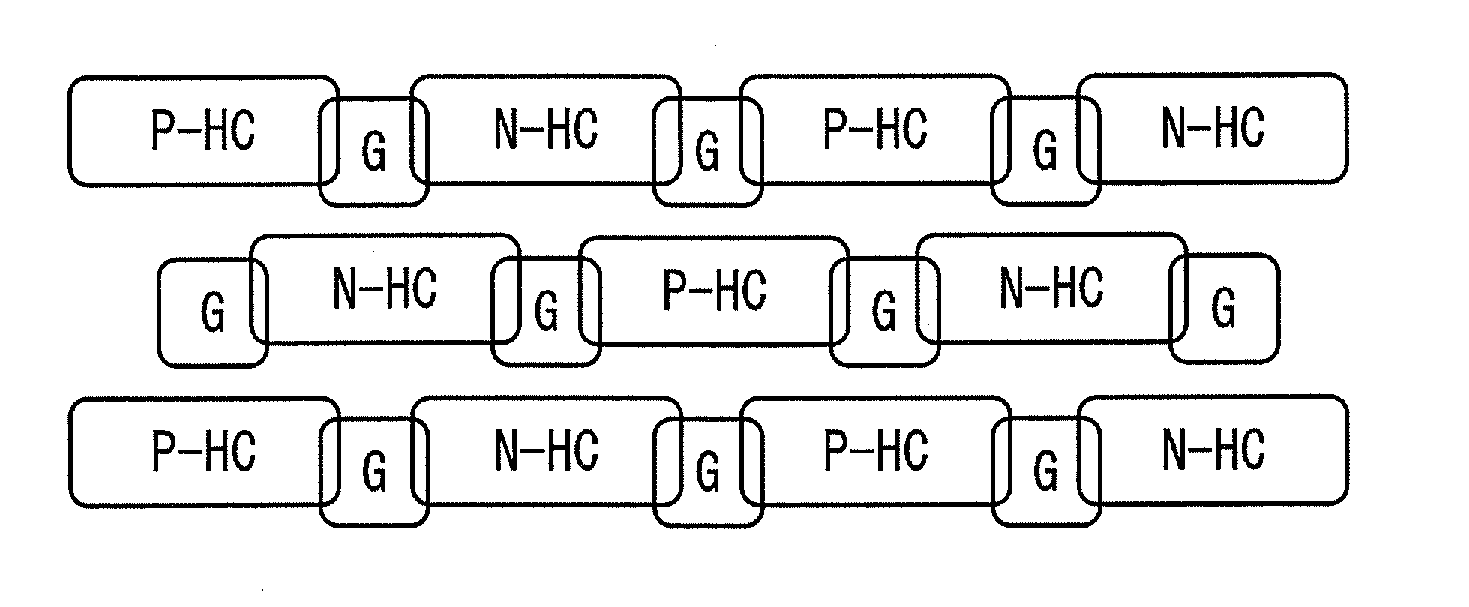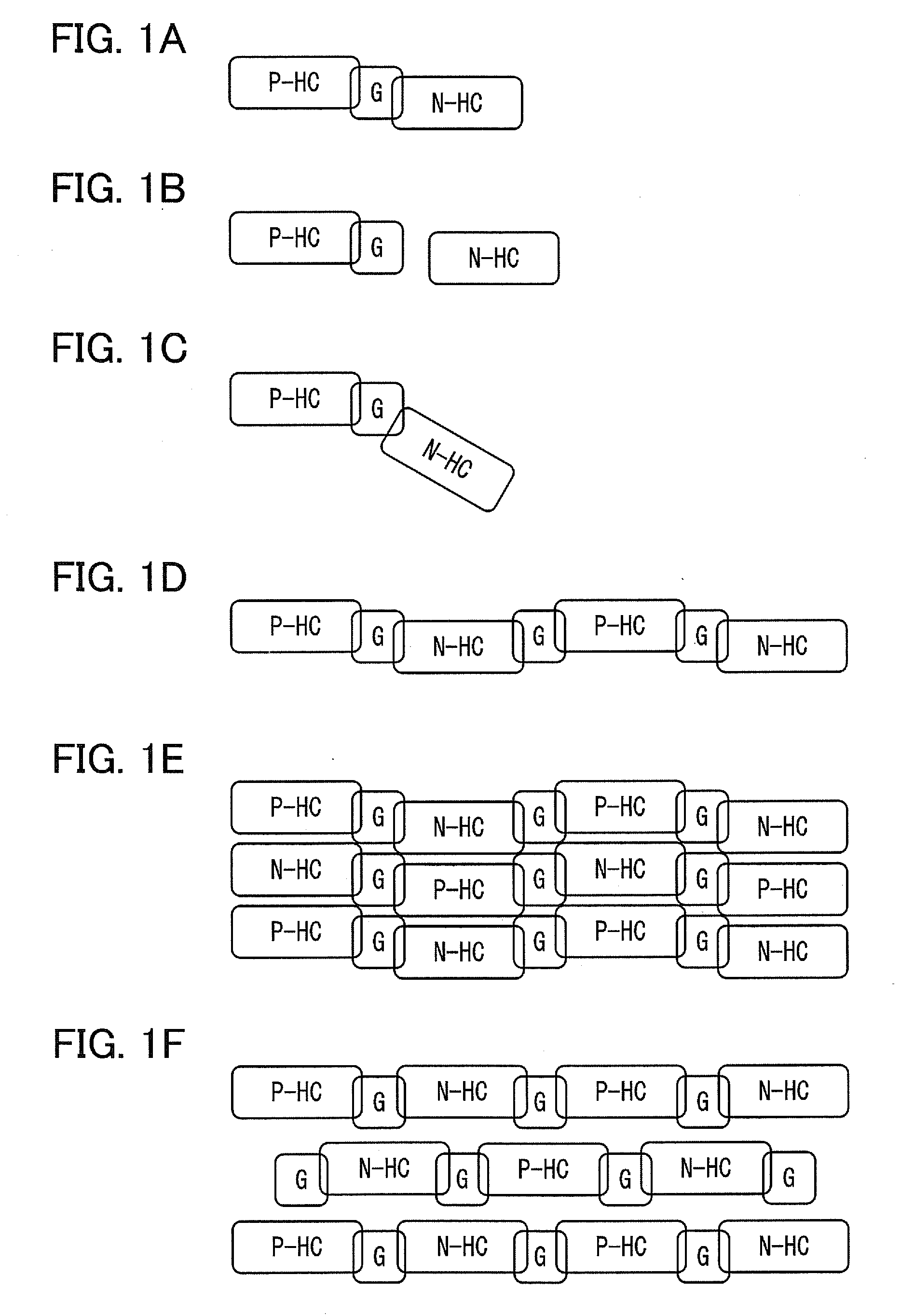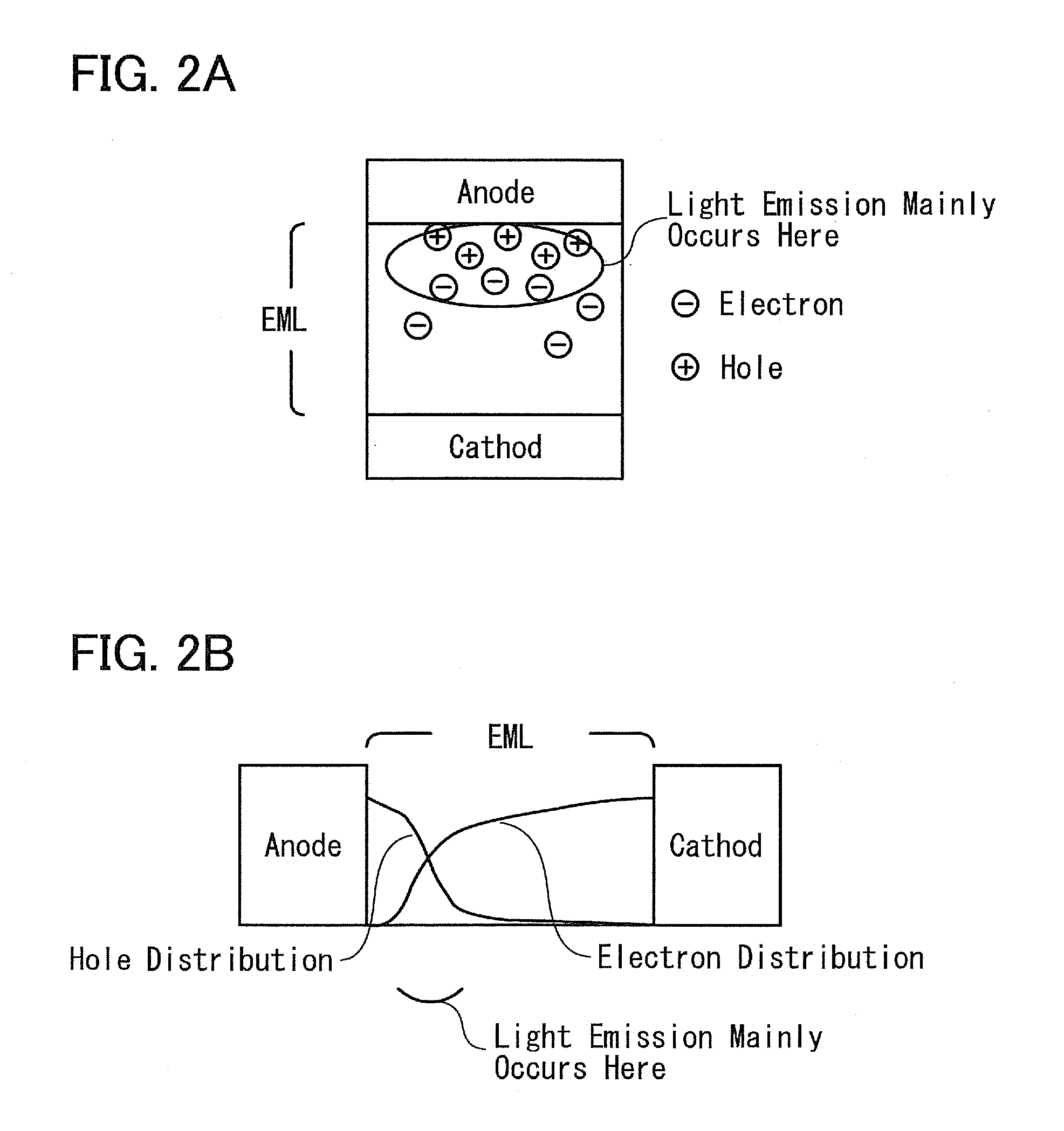Light-emitting body, light-emitting layer, and light-emitting device
a light-emitting device and light-emitting layer technology, applied in the field of carrier injection organic electroluminescence, can solve the problems of poor transporting property of the other, less emission efficiency, and more significant deterioration than expected, and achieve the effect of limited energy loss and limited energy loss
- Summary
- Abstract
- Description
- Claims
- Application Information
AI Technical Summary
Benefits of technology
Problems solved by technology
Method used
Image
Examples
embodiment 1
[0076]In this embodiment, examples of materials which can be used as an n-type host, a p-type host, and a guest will be described. FIG. 3A shows a molecular structural formula of 2-[3-(dibenzothiophen-4-yl)phenyl]dibenzo[f,h]quinoxaline (abbreviation: 2mDBTPDBq-II) which can be used as the n-type host. In general, when a heteroatom (i.e., an atom having higher electronegativity than carbon), such as a nitrogen atom, is introduced to constituent atoms of a six-membered aromatic ring such as a benzene ring, the heteroatom attracts π electrons on the ring and the aromatic ring tends to be deficient in electrons. In the diagram, a portion A surrounded by a dotted line corresponds to a portion which is deficient in π electrons, and this portion is likely to trap electrons. Heteroaromatic compounds comprising six-membered rings generally tend to serve as n-type hosts.
[0077]FIG. 3B shows a molecular structural formula of 4,4′-di(1-naphthyl)-4″-(9-phenyl-9H-carbazol-3-yl)triphenylamine (abb...
example 1
[0086]In this example, a light-emitting element of one embodiment of the present invention will be described. Chemical formulae of materials used in this example are shown below.
[0087]Methods for manufacturing a light-emitting element 1 and a comparative light-emitting element 2 of this example will be described below.
(Light-Emitting Element 1)
[0088]First, a film of indium tin oxide containing silicon (ITSO) was formed over a glass substrate by a sputtering method, so that a first electrode functioning as an anode was formed. Note that the thickness was set to 110 nm and the electrode area was set to 2 mm×2 mm.
[0089]Next, as pretreatment for forming the light-emitting element over the substrate, UV ozone treatment was performed for 370 seconds after washing of a surface of the substrate with water and baking that was performed at 200° C. for one hour.
[0090]After that, the substrate was transferred into a vacuum evaporation apparatus where the pressure had been reduced to approximate...
example 2
[0108]In this example, a light-emitting element of one embodiment of the present invention will be described. A chemical formula of a material used in this example is shown below. Note that the chemical formulae of the materials used in the above example are omitted here.
[0109]A method for manufacturing a light-emitting element 3 of this example will be described below.
(Light-Emitting Element 3)
[0110]First, a film of ITSO was formed over a glass substrate by a sputtering method, so that a first electrode functioning as an anode was formed. Note that the thickness was set to 110 nm and the electrode area was set to 2 mm×2 mm.
[0111]Next, as pretreatment for forming the light-emitting element over the substrate, UV ozone treatment was performed for 370 seconds after washing of a surface of the substrate with water and baking that was performed at 200° C. for one hour.
[0112]After that, the substrate was transferred into a vacuum evaporation apparatus where the pressure had been reduced ...
PUM
 Login to View More
Login to View More Abstract
Description
Claims
Application Information
 Login to View More
Login to View More - R&D
- Intellectual Property
- Life Sciences
- Materials
- Tech Scout
- Unparalleled Data Quality
- Higher Quality Content
- 60% Fewer Hallucinations
Browse by: Latest US Patents, China's latest patents, Technical Efficacy Thesaurus, Application Domain, Technology Topic, Popular Technical Reports.
© 2025 PatSnap. All rights reserved.Legal|Privacy policy|Modern Slavery Act Transparency Statement|Sitemap|About US| Contact US: help@patsnap.com



